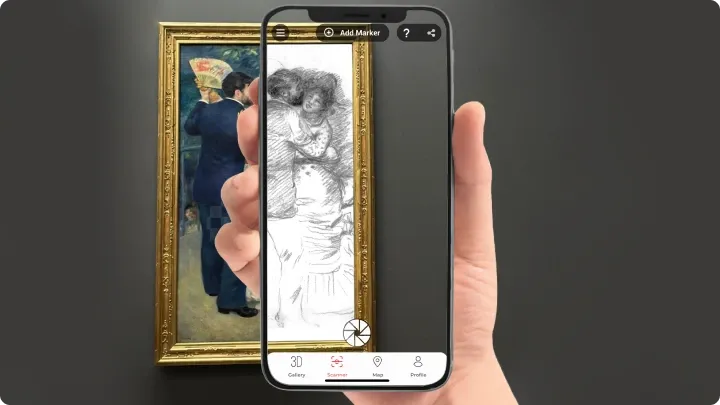Blog  Benefits of having Augmented Reality in museums
Benefits of having Augmented Reality in museums
Benefits of having Augmented Reality in museums
Augmented reality museum experience

Augmented reality (AR) has been making waves in many different industries, and the museum sector is no exception. With its ability to enhance visitors' experiences and bring exhibits to life, augmented reality is quickly becoming a popular addition to museum exhibits. Here are 20 benefits of incorporating augmented reality in museums:
- Enhance visitor engagement: AR can make museum exhibits more interactive and engaging, which can help keep visitors interested and invested in the experience.
- Bring exhibits to life: By adding an augmented layer to exhibits, museums can create an immersive and realistic experience for visitors.
- Increase accessibility: AR can help make exhibits more accessible to those with disabilities, such as visual impairments, by providing audio or visual cues.
- Add new layers of information: By overlaying information on top of exhibits, museums can provide additional context and insights for visitors.
- Provide a unique experience: AR can create a unique and memorable experience for visitors that they may not find elsewhere.
- Encourage exploration: By adding interactive elements to exhibits, visitors are encouraged to explore and engage with the space.
- Make exhibits more fun: AR can add a fun and playful element to exhibits, making them more enjoyable for visitors of all ages.
- Increase visitor retention: By enhancing the overall experience, visitors are more likely to remember the museum and return in the future.
- Promote learning: AR can provide an engaging and interactive learning experience for visitors, making it easier to retain information.
- Bring history to life: By using AR to recreate historical scenes or events, museums can provide a more immersive experience for visitors.
- Appeal to a younger audience: AR can appeal to younger audiences who are more familiar with technology and may be more likely to engage with interactive exhibits.
- Offer personalized experiences: AR can be customized to provide a personalized experience for visitors based on their interests and preferences.
- Create a buzz: By incorporating cutting-edge technology, museums can generate buzz and attract new visitors.
- Increase social media engagement: AR can be shared on social media platforms, encouraging visitors to share their experiences and attract others to the museum.
- Create a competitive edge: By offering a unique and innovative experience, museums can set themselves apart from competitors.
- Expand educational reach: AR can be used to expand the educational reach of museums, allowing them to reach audiences beyond their physical location.
- Provide a different perspective: AR can provide a different perspective on exhibits, allowing visitors to see them from a new angle or in a new context.
- Offer more in-depth information: By adding an augmented layer, museums can provide more detailed information on exhibits without overwhelming visitors.
- Create memorable experiences: By providing a unique and immersive experience, visitors are more likely to remember their trip to the museum.
- Increase revenue: By offering a more engaging and interactive experience, museums may be able to increase revenue through ticket sales and merchandise.
Conclusion
Augmented reality can provide many benefits to museums, including enhancing visitor engagement, making exhibits more accessible, and promoting learning. By incorporating AR into exhibits, museums can provide a unique and innovative experience that is sure to leave a lasting impression on visitors.
See more articles
Solutions











